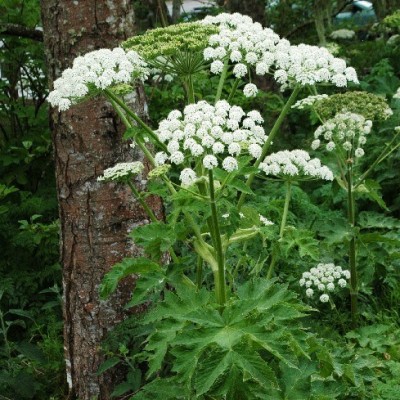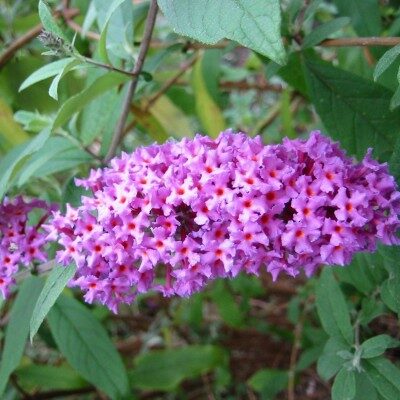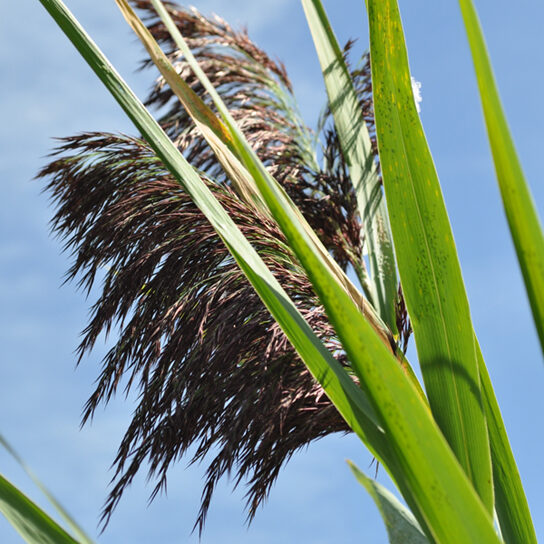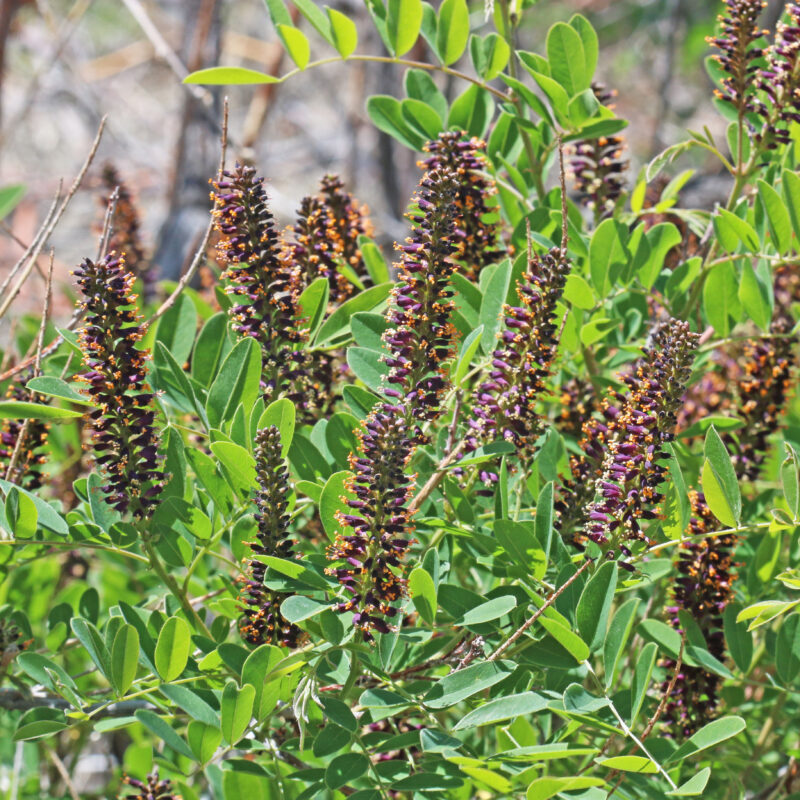
Giant hogweed (Heracleum mantgazzianum) is a perennial from the carrot or parsley family which grows between 10 and 15′ tall. The stalk and flower heads develop after 2-4 years, after which the plant dies back. The hollow stalks are 2-4″ in diameter and have reddish-purple blotches. The flower head is a large umbrella-like canopy up to 3′ in diameter and the leaves are 3-5′ wide and are deeply incised. You’ll find giant hogweed in riparianRiparian areas The land alongside a stream, creek, river, or floodplain and wet areas.
This plant is a health hazard to humans. Its clear, watery sap sensitizes the skin to UV radiation and people who come into contact with it develop severe burns with blistering and painful dermatitis. Blisters can develop into purplish or blackened scars.
Giant hogweed comes from Asia and was brought over as an ornamental. Unfortunately, it looks a lot like native cow parsnip so be sure you know what you have before digging it out.
Some native plant alternatives are:
- Blue elderberry
- Birchleaf spirea
- Western serviceberry
- Mock orange
Read more about giant hogweed and other weeds from the 4-County Cooperative Weed Management Area’s fact sheets.


